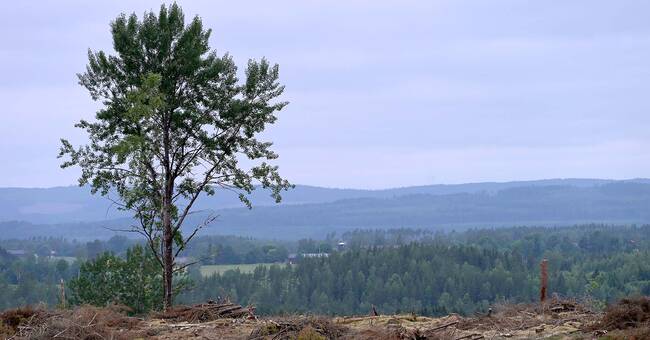Research shows that Swedish forestry emits large amounts of carbon dioxide emissions, as SVT's series The Battle for the Forest has shown.
This is now confirmed by another study published in Environmental Research Letters.
The Swedish forest industry often believes that forestry is good for the climate, but with today's strategies, this benefit will only be seen in over 100 years.
Reducing deforestation, on the other hand, would have immediate climate benefits, write the researchers at Mid Sweden University and Umeå University.
- Today's strategy requires that we can accept increased emissions over the next 50 to 100 years.
We might be able to do that with a balanced climate system, but today, when we have high and increasing carbon dioxide levels - well then it is a very dangerous strategy, says Göran Englund who is one of the researchers in a press release.
Harvesting forests that capture CO2
The results of the study show that increased deforestation is bad for the climate both in the short and medium term, over 50 years.
This is despite the fact that biofuel from forest raw materials is also phasing out fossil fuels.
Leaving trees, on the other hand, would have a quick and immediate climate benefit, the new study shows.
The traditional strategy in Swedish forestry is based on a long-term perspective.
These strategies have a potential climate benefit of over 100 years.
But until then, the positive effects will be overshadowed, the researchers write.
The reason is that forests are being felled while still absorbing a lot of carbon dioxide.
The forest is being replaced by clear-cutting - which instead emits carbon dioxide.
An unreasonable solution
The issue is a watershed among forest researchers, where one side focuses on preserving the forest as a carbon stock while the other side sees the forest as a resource.
Johan Stendahl, who is an associate professor of soil science at the Swedish University of Agricultural Sciences, believes that it is an unsustainable solution to reduce the felling of the forest because the demand for sustainable wood products is so high.
- Market and consumption is what drives the entire forestry.
If we have a craving for these products, we will instead take the resources from another country.
We need the forest to be able to meet the need for sustainable products in the future.
The idea of stopping felling therefore feels very theoretical and illogical, says Johan Stendahl.
Instead, he thinks we should focus on developing sustainable alternatives.
- We must not lose focus on the really important issues - fossil freedom and reducing consumption and travel.
Watch The Battle of the Forest on SVTPlay.

